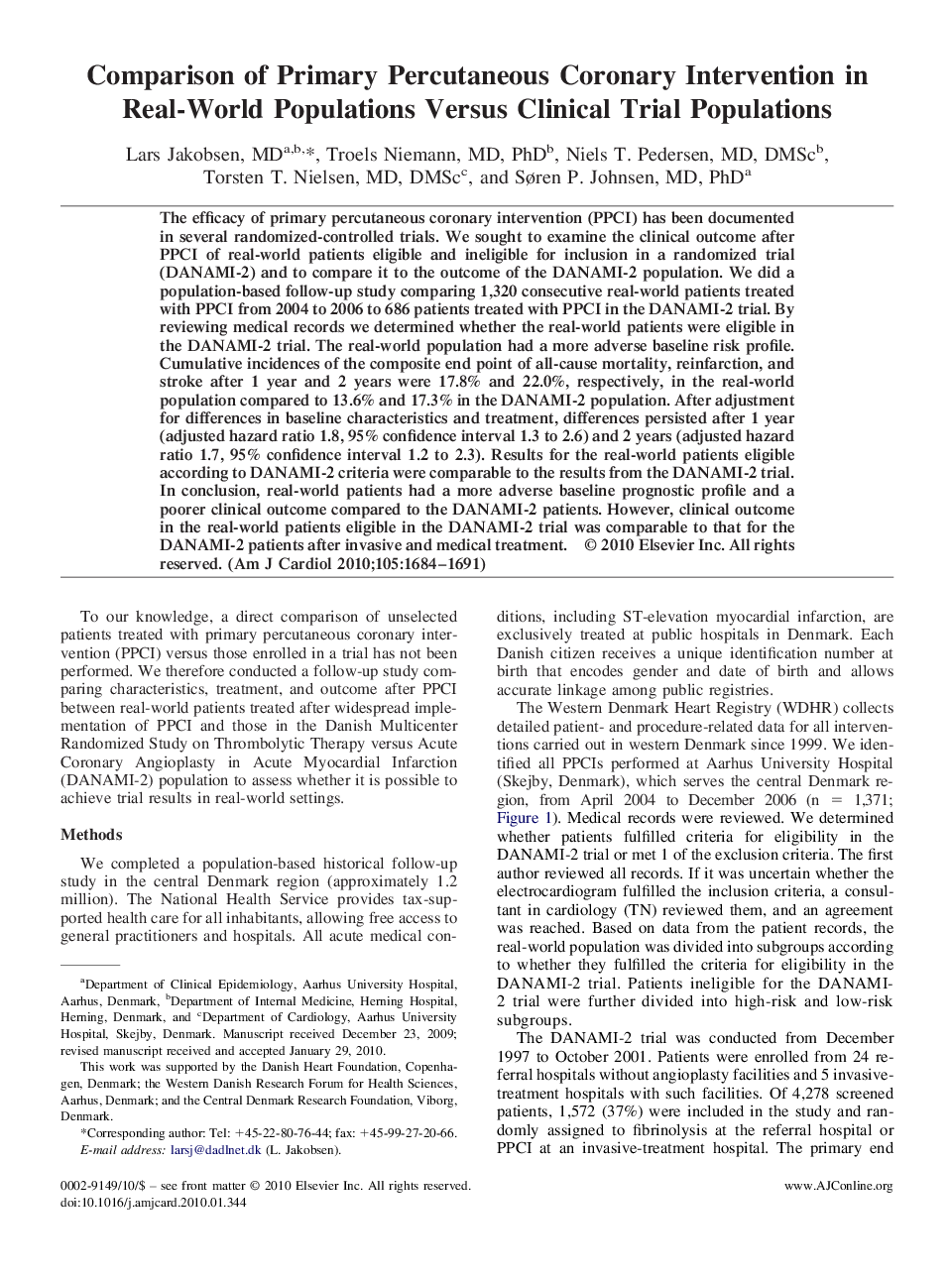| کد مقاله | کد نشریه | سال انتشار | مقاله انگلیسی | نسخه تمام متن |
|---|---|---|---|---|
| 2858332 | 1572270 | 2010 | 8 صفحه PDF | دانلود رایگان |

The efficacy of primary percutaneous coronary intervention (PPCI) has been documented in several randomized-controlled trials. We sought to examine the clinical outcome after PPCI of real-world patients eligible and ineligible for inclusion in a randomized trial (DANAMI-2) and to compare it to the outcome of the DANAMI-2 population. We did a population-based follow-up study comparing 1,320 consecutive real-world patients treated with PPCI from 2004 to 2006 to 686 patients treated with PPCI in the DANAMI-2 trial. By reviewing medical records we determined whether the real-world patients were eligible in the DANAMI-2 trial. The real-world population had a more adverse baseline risk profile. Cumulative incidences of the composite end point of all-cause mortality, reinfarction, and stroke after 1 year and 2 years were 17.8% and 22.0%, respectively, in the real-world population compared to 13.6% and 17.3% in the DANAMI-2 population. After adjustment for differences in baseline characteristics and treatment, differences persisted after 1 year (adjusted hazard ratio 1.8, 95% confidence interval 1.3 to 2.6) and 2 years (adjusted hazard ratio 1.7, 95% confidence interval 1.2 to 2.3). Results for the real-world patients eligible according to DANAMI-2 criteria were comparable to the results from the DANAMI-2 trial. In conclusion, real-world patients had a more adverse baseline prognostic profile and a poorer clinical outcome compared to the DANAMI-2 patients. However, clinical outcome in the real-world patients eligible in the DANAMI-2 trial was comparable to that for the DANAMI-2 patients after invasive and medical treatment.
Journal: The American Journal of Cardiology - Volume 105, Issue 12, 15 June 2010, Pages 1684–1691